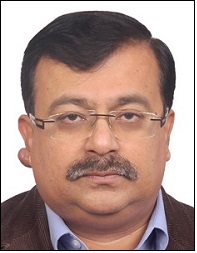
Indian handloom industry in dire straits as production, exports decline
Jayashankar Menon | @TheDollarBiz  The government says that India’s total textile exports managed to recover to around $39.3 billion in FY2013-14, which is up about 12.5% from the previous year and a significant increase from the 5.32% decline seen in the previous year. The government expects textile exports to grow again to $45 billion in FY2014-15, a jump of around 14.5%. However, it’s not all rosy for the handloom sector which continues to be entangled in a knotty situation. According to the Ministry of Textiles, handloom production is expected to decline 4% to around 1,116 million sq. m. in FY2014-15, compared to increases seen in all other sectors: mill (6%), powerloom (3%), and hosiery (7%). Meanwhile, the share of handloom in total textile production is expected to shrink to 10%, which is less than half of the 23% share in FY1995-96. The government says that India’s textile industry faces competition from Pakistan, Sri Lanka and Bangladesh after EU removed India from the preferential duty list in January 2014. However, there are multiple reasons for the decline: plummeting exports, lack of modernization, changing consumer preferences, high production costs, and market dynamics. In an exclusive interview with Gagan Rai, Chairman, Handloom Export Promotion Council (HEPC), The Dollar Business tries to find out what’s going wrong with a legacy that played a crucial part in India’s independence movement. Excerpts:
The government says that India’s total textile exports managed to recover to around $39.3 billion in FY2013-14, which is up about 12.5% from the previous year and a significant increase from the 5.32% decline seen in the previous year. The government expects textile exports to grow again to $45 billion in FY2014-15, a jump of around 14.5%. However, it’s not all rosy for the handloom sector which continues to be entangled in a knotty situation. According to the Ministry of Textiles, handloom production is expected to decline 4% to around 1,116 million sq. m. in FY2014-15, compared to increases seen in all other sectors: mill (6%), powerloom (3%), and hosiery (7%). Meanwhile, the share of handloom in total textile production is expected to shrink to 10%, which is less than half of the 23% share in FY1995-96. The government says that India’s textile industry faces competition from Pakistan, Sri Lanka and Bangladesh after EU removed India from the preferential duty list in January 2014. However, there are multiple reasons for the decline: plummeting exports, lack of modernization, changing consumer preferences, high production costs, and market dynamics. In an exclusive interview with Gagan Rai, Chairman, Handloom Export Promotion Council (HEPC), The Dollar Business tries to find out what’s going wrong with a legacy that played a crucial part in India’s independence movement. Excerpts:
 Gagan Rai, Chairman, Handloom Export Promotion Council (HEPC)
Gagan Rai, Chairman, Handloom Export Promotion Council (HEPC)TDB: Why is the handloom sector in India experiencing negative growth? Gagan Rai: Exports to India’s two traditional importers of handloom, USA and EU, are down. The economic slowdown in EU has adversely affected India’s handloom exports and demand in USA remains below pre-2008 levels. As per available data, handloom exports to USA have declined sharply by around 49% from Rs.1,306 crore during April 2012 - February 2013 to Rs.667 crore during April 2013 - February 2014. In the same period, handloom exports to Europe have also declined: UK (-4.1%); France (-3.8%); Belgium (-21%); Cyprus (-45%); Romania (-19%); Slovakia (-31%); and Ireland (-7%). On a product specific level it is observed that home textiles category exports have witnessed a steep decline from Rs.946.41 crore during April 2012 - March 2013 to Rs.70.31 crore during April 2013 - February 2014. TDB: Are there domestic factors as well? Gagan Rai: HPEC has undertaken a massive exercise of consultation with stakeholders to analyse and find out the reasons for this downturn. However, Indian handloom products are losing their competitiveness to countries like Pakistan and Bangladesh because textile exports from India suffer 8% import duty in European countries but such import duty is not liable on these products from Pakistan and Bangladesh. In addition to these macro-economic factors, handloom sector has low productivity and cannot fulfil bulk orders. Moreover, several large branded stores insist on Corporate Social Responsibility norms in the entire supply chain, which the largely unorganized handloom sector in India is unable to meet due to irregular working hours, wages, work environment, health, safety, etc. TDB: The handloom sector is an employment intensive sector, but the share of handloom products in total textile production is shrinking (now at around 10%). Whereas the share of powerloom sector is around 60%. Why is this paradox? Gagan Rai: Handloom is the foundation of textiles. However, the entire process of weaving on a loom is done manually without the use of power. A handloom weaver can produce a very small quantity, say seven metres of cloth per day, whereas in powerloom the quantity is huge. Moreover, the total weaver household units have declined from 29.9 lakh in the first census in 1987 to 22.6 lakh in the third census in 2009-10. Non-availability of skilled manpower is also a reason for the declining share of handloom production. TDB: What are the challenges in terms of technology and marketing? Gagan Rai: I feel the scope for modernization is limited in handlooms because of its inherent nature. Availability and timely supply of raw material at a reasonable price and desired quality is a perennial problem for individual weavers. Weavers in the rural areas are unable to procure yarn in small quantities or in required quality resulting in poor output and stagnation in their economic condition. There also exists a huge gap in acquisition and dissemination of marketing information/knowledge by cooperative societies. Moreover, handloom exports have to compete fiercely, first with other sectors like powerloom and then with products of competing countries. This blunts export competitiveness of handloom products in the global arena resulting in low export share. International buyers are more conscious of price than origin or social value. TDB: What measures has HEPC taken to curb the decline in production and exports from handloom sector? Gagan Rai: HEPC has collated and submitted proposals to revive traditional handloom items in 20 states to the government. This initiative aims to revive designs, colours, and weaves that are nearly extinct. HEPC has conceptualized the India International Handwoven Fair (IIHF) to help identify sustainable marketing solutions for the handloom industry. HEPC also organizes fashion shows as a part of the IIHF to showcase the USPs of Indian handloom products such as beauty, versatility and uniqueness. These initiatives are expected to promote handloom exports in the long run. Several other international events and audio-visual promotional campaigns are also part of our efforts to strengthen the handloom sector.






 to success.
to success.